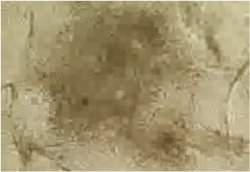 |
| As células do coração, geradas a partir de células-tronco induzidas, batem de verdade, abrindo caminho para sua implantação no coração de pessoas que sofreram ataques cardíacos. |
Cientistas da Universidade Johns Hopkins, nos Estados Unidos, desenvolveram um procedimento simplificado e mais barato que poderá ser usado por cientistas de todo o mundo para transformar células do sangue em células cardíacas.
O método é mais seguro porque não utiliza vírus nas etapas intermediárias, como normalmente se faz, e produz as células do coração que batem com quase 100 por cento de eficiência.
"Nós transformamos o processo de uma complexa receita de minestrone em uma simples sopa de missô," disse o Dr. Elias Zambidis, coordenador da pesquisa.
Células-tronco sem vírus
Muitos cientistas duvidavam da possibilidade de um método não-viral para induzir células de sangue a se transformarem em células cardíacas funcionais, que batem de verdade.
Apesar de terem conseguido justamente isso, os cientistas alertam que as células cardíacas ainda não estão prontas para testes em humanos.
Para obter células-tronco retiradas de uma fonte (como o sangue) e transformá-las em uma célula de outro tipo (como células do coração), os cientistas geralmente usam um vírus para entregar um pacote de genes nas células que, em primeiro lugar, faz com que as células originais se transformem em células-tronco.
No entanto, é comum que os vírus induzam mutações nos genes, gerando um câncer nas células recém-transformadas.
Para inserir os genes sem usar um vírus, a equipe de Zambidis voltou-se para os plasmídeos, anéis de DNA que se replicam rapidamente no interior das células e, eventualmente, se degradam.
Receita de célula-tronco
Além da complexidade de persuadir as células-tronco em outros tipos celulares, é necessário elaborar uma receita cara e complicada de fatores de crescimento, nutrientes e condições ambientais que banham as células-tronco durante a sua transformação.
A receita desse "caldo" difere de laboratório para laboratório e de uma linhagem celular para outra.
A equipe de Zambidis simplificou a receita e as condições ambientais necessárias para que as células que estão se transformando em células cardíacas.
Eles verificaram que sua receita funcionou de forma consistente para 11 diferentes linhagens de células-tronco - um verdadeiro arroz com feijão, fácil de preparar e que cabe em qualquer ocasião.
A técnica funcionou tanto para as mais controversas células-tronco embrionárias, como para as linhagens de células-tronco induzidas - sobretudo para as linhagens de células geradas partir das células-tronco adultas.
No futuro, os cientistas esperam utilizar essas células-tronco para implantá-las em pacientes que sofreram ataques cardíacos.





